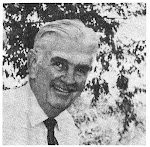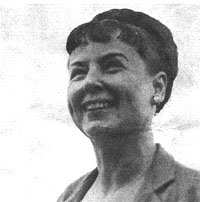Thursday, December 6, 2012
Unforgettable Minn
By Brad Fisher
In 1951, Holling Clancy Holling muddied the waters of fiction and nonfiction and came up with a winner of a tall tale.
A snapping turtle, like the heroine of Holling Clancy Holling’s Minn of the Mississippi encountered in the wild, is a primeval, elemental thing. Even if she doesn’t bite you, she’s going to leave a mark. Her cragged, mossy back, long dinosaur tail and cruel predator’s jawline warn you that she is no dime-store pet. She is an ancient, alien intelligence that will take your arm — clean off — if she’s so inclined. Or, as in the fevered nightmare of a hapless human who meets Minn in her native element, she may just grab you by the belly and split you like a melon.
My own unforgettable encounter with Holling’s river monster took place at a suburban Seattle library in the summer of 1961. It wasn’t face to face, it wasn’t in the field, but it was memorable nonetheless.
Minn was ten years old at the time. I was nine, and was allowed, with a friend, to walk the half mile to the library. Our path cut across a hayfield and a blueberry farm, affording us irrigation ditches and filled-up tractor ruts that teemed with frogs and salamanders, which we often captured to bring home.
And perhaps it’s that casual, wet, green context that made Minn stick in the back of my mind for most of my life.
For Minn is nothing if not watery and green. The story of a snapping turtle who journeys the length of the Mississippi, Minn takes place under water much of the time. And so Holling’s lush, full-page watercolor illustrations run the spectrum from teal to emerald to rich gold and olive, fading into brown. His black-and-white margin illustrations of hatching turtle eggs and mighty watersheds are lush and wet even without color.
Minn was one of five well-known books that Holling wrote over a 15 year period that successfully combined natural history, geography, geopolitical history and and engaging fiction: Paddle to the Sea, The Tree in the Trail, Seabird and Pagoo. The best known books of his career, they won numerous awards and were touted in the elementary schools of the fifties and sixties. They’re all still in print, fueled by their popularity in home school curricula.
All of these wonderful books have in common a natural blend of fiction and nonfiction, art and narrative, reality and imagination. In Minn of the Mississippi, Holling found a way to create a current of history, geology, hydrology, geography, and nature that flowed with the main character on her life’s journey from Minnesota to New Orleans. To capture young imaginations, Holling used a legacy of nature writing by authors like Ernest Thomson Seton and others, who could personify, without anthropomorphizing, an animal like a grizzly bear or a snapping turtle. Holling maneuvers deftly from snapper to human perspective and back to suit his narrative and educational goals. His margin drawings compare the geographic shapes carved by the great river system to animals, people and objects in a way that forever changes the way you look at a map of the country. And his lush watercolors of everything from pirate treasure to pre-Columbian Indian mounds and riverine nightmares paint Minn’s world in vivid layers soaked in color. Caught in this enchanting stream, a nine-year-old boy would hardly know he was learning about the commerce and natural history of one of the world’s great watersheds.
Minn was the penultimate book in Holling’s series. It was not the most famous. That claim went to Paddle-to-the-Sea, which won a Caldecott Honor Book award, was made into a movie, and now claims its own amusement park in Canada. Minn, like its stolid, ungainly, under-the-surface heroine, left the limelight to others.
But you don’t want to underestimate the grip of an alligator snapping turtle. Minn hibernated under the surface of my childhood memories, staying buried until my own children reached the age of fascination with small creatures. We bought dozens of books to read to them, selecting from what was current at the time. Then one day, on a trip to the local library of our hometown in suburban Pittsburgh, Minn stirred in my imagination. This was the early nineties, so they still had a card catalog, and sure enough, the book was there. Perfect for a read to my young kids.
But not.
My eight-year-old son fell asleep. My five-year-old daughter wrinkled up her nose and demanded something different. Something with ponies. Not great.
I persisted for a few months, dragging out a paperbound copy that I’d bought. But at some point it became obvious that Holling’s lush art and equally vivid narrative would be lost on this generation, to judge by my kids, at least. My persistence became a family joke, an indication of how out of touch Dad was. And so I let Minn slip away.
Pity. Because, living in Pittsburgh, we might as well be in Minn’s back yard. After fifty years of our own peregrinations, my wife and I have spawned and raised our own brood of little snappers in the Ohio River watershed, in the heart of the great American network of Mississippi headwaters. (Coincidence? Perhaps.) The birthplace of environmentalist Rachel Carson, this is habitat for snappers like Minn, as well as great river catfish, muskellunge, steelhead, hellbenders and other primitive murky creatures ... different and perhaps more essentially American than the tree frogs and newts of my rain-washed childhood home in the Pacific Northwest. It’s also a combination of industrial and post-industrial watershed ... something Holling described without bias or romance in Minn of the Mississippi.
But times change. There are no hayfields or blueberry farms where we live, and water creatures are more likely to be something you encounter in a book than a mud puddle.
If you pick up the book, that is.
But there may be hope. I’ve been reading articles about the “Common Core” curriculum being proposed for public schools. There’s a fierce debate over how much fiction kids should read, and how much nonfiction — nonfiction being seen as important to the kind of analytical reading kids will have to do in the real world of desks and computers. I have no dog in that fight, although my daughter, who’s grown up and now preparing to be a high school English teacher, does. She’s the one who wrinkled up her nose at Minn and its gripping blend of fiction and nonfiction back in 1992.
Maybe I’ll get her to read it this time around.
Brad Fisher is a principal in the Pennsylvania public relations and advertising firm, B.R. Fisher. He’s a follower of this Holling blog, and we’re happy he offered us this charming memoir.
Subscribe to:
Post Comments (Atom)










[re-posted from Joan Hoffman]
ReplyDeleteI read Brad Fisher's article and the ending got me thinking more. I, too, have wondered about how the current generation is going to deal with the Holling's Houghton Mifflin series of books. I haven't been with enough young people to know. I see my five-year-old grandson looking at books. Many of them have sound and pages are turned with the movement of the child's finger. There are hundreds of children's books. Certainly it is a different time for children. Children also watch many fast-moving videos and shows.
I would think that it probably depends on how the Holling books are presented and the child's experiences. Our grandson spends a lot of time outdoors when he is here. Many children don't that opportunity. We live on 43 acres with fields, pond, foot bridge over a creek, and woods. He watches wildlife, digs in the dirt and asks many questions. I think he will be able to relate to the Holling books when he is a little older. (I'll be very disappointed if he doesn't.)
The Holling books have a beauty of their own in words and illustrations so I sure hope they don't get lost in today's technology, our hurried pace and lack of contact with nature.
I just found your blog. I am a home schooling mom that runs a book club. Along with 12 boys, aged 7-10, we are enjoying an amazing journey with each book. We are using an accompanying homeschool curriculum available from Beautiful Feet publishers called _Geography: A Literature Approach_. These boys (and their families) are truly loving these books.
ReplyDeleteFor many families, the books have turned into read-alouds with children clamoring over the reader's shoulder in order to see the treasure trove of information in the marginalia and beautiful pictures on the facing page. HcH brilliantly put enough pictures on both pages to engage the eyes of the listener until the reader has finished the page!
I have one more younger son who is anxious for his turn to read these books for "book club." So glad to have found this blog. Authorship and context is so important in book study. This blog helps me tremendously in that task.
In Learning, Dec., 1976 "The Teachings of Paddle-to-the-Sea." Terry Borton reports that more than 250,000 hard copies of Paddle-to-the-Sea have been sold. It is hard to imagine what that number would be today.
ReplyDelete